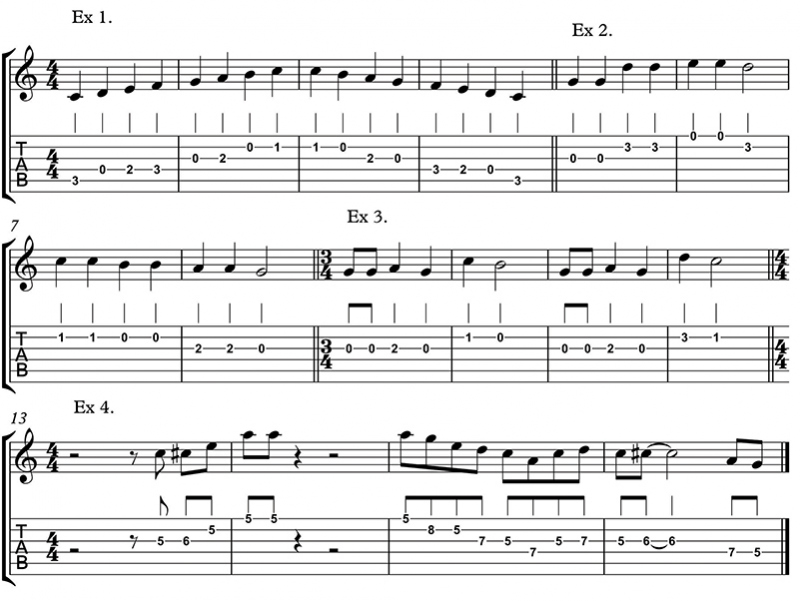Guitar Cool: Play What You Hear
Guitar Cool: Play What You Hear
As a musician you will almost certainly have heard the line “play what you hear” – but many find that doing so is way more difficult than the apparently simple theory behind it. No doubt it would be great to play whatever you can hear in your head, or on a recording as it would make learning your favourite songs, solos, and even writing songs so much easier than it currently is.
In order to be able to play what you hear effortlessly, you need to have your fingers and brain working together. So how do we get fingers and brain operating in sync? There is only one way you can do it, and that is to begin singing whatever it is you are playing. Beware, you have to start out on this road with simple things, then progressively work through to the more difficult things.
Here are a few exercises that will really work wonders if you take things slowly and allow the time to practice them.
In Exercise 1 you can see a C major scale. It’s best to begin by just singing the scale ascending and get used to that before approaching the descending part of it. Keep it in two sections. Once you have that down you need to be able to sing that scale ascending and descending slowly while getting the pitches into your memory system. If that scale is too high or low for you, then any other major scale in another key that you feel comfortable with will do.
Keep doing this for at least a week, or until you think you have mastered it.
Exercise 2 is Twinkle, Twinkle, Little Star. It’s written out fully for you to sing with and is the next step in the sequence. These little four bar melodies are great to get started with playing what you hear.
Many guitarists will dismiss such melodies as boring, not worthy of practice, etc., but not many players can pick these little melodies out by ear on their instrument, which leaves a gaping hole in their abilities. It’s surprising how many times I am asked to play simple little melodies on a gig, or in the studio.
Exercise 3 is another that’s familiar-to-everyone tune, Happy Birthday. I have only half written it out, but this time you have to complete it by ear. This is the third step in the process. Don’t look up the tab or music notation, do it by ear.
Here is how to practice it – play what I have written, then sing what you hear in your head to complete it first. When you have the melody to complete it in your head, then, and only then play it on your guitar. This is a fun way to practice playing what you hear in your head.
Exercise 4 is the next step in the sequence. I have written a simple rock lick that you hear quite often to sing to. Notice the lick is in two halves. The idea is to sing this lick and get it into your head. You can do this with any simple other licks you know.
To take this a bit further, you can sing the first half of the lick and answer it with a different second half that you hear in your head.
This certainly is a fun way to practice playing what you are hearing, and with a bit of time spent you will start to see results you never thought possible. If you aspire to be playing at higher levels then playing what you hear is a must to be able to do.
Kevin Downing is a professional guitarist, teacher and author. His contact details, along with many other articles and freebies, are on his website at www.guitar.co.nz

